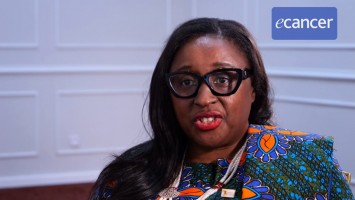EADO Congress 2015
What are the prognostic values of 25-hydroxyvitamin D3 levels at diagnosis and follow-up?
Prof Philippe Saiag - University of Versailles, Versailles, France
Vitamin D seems to have an important role in cancer and you are investigating it. Tell me about the prospective study that you’ve been doing and what’s coming out of it. First of all, what have you been doing in the study?
You’re right, vitamin D has a lot of action that has been believed to be important for cancer. It may prevent some cancers in population studies and in some cohorts of patients with the disease higher levels of vitamin D were protective, were associated with good prognostic factors. But in fact most of these studies are flawed by various biases and when you give the patient vitamin D you do not prevent, in most cases, cancer or you do not improve the prognosis.
What did you do in the study?
In our study we had a prospective cohort of melanoma patients that were recruited from 2003 to 2008 and we prospectively measured vitamin D levels at diagnosis and during each semester. We were able to demonstrate that the vitamin D level at diagnosis was associated with poor prognostic criteria for melanoma – high Breslow thickness, high AJCC staging, but at the end was not associated with poorer PFS or overall survival. What was very new, we also looked at the variation over time of the vitamin D level and we were able to demonstrate in the same cohort of patients that the patients with a stable level of vitamin D had the better prognosis but those patients who had a very decreased level of vitamin D or an increased level of vitamin D over time had a worse prognosis and it translated into a worse overall survival and a worse progression free survival.
What is your interpretation of these fascinating data?
For the reduction of the vitamin D level it seems that it is linked to inflammation and inflammation is linked to development of the cancer, it is also linked to ulceration which is a bad prognosis factor in melanoma and some genes that are linked to inflammation are also hyperactive in melanoma cells. So it’s easy to understand why declining vitamin D is associated with deterioration of the patient. But the increase was very difficult to understand. We looked at patients that could have made some supplementation with vitamin D and in France they had the possibility to have vitamin D2 or D3 supplements and vitamin D2 supplements were not taken by more than 6% of the patients. But the thing is that we did not record the patients’ exposure to the sun which is the main source of vitamin D and maybe this exposure to the sun is detrimental for the patients. But it has to be proven.
So you might then have a balance between the melanoma causing properties of sunlight and the vitamin D generating effect?
Yes, this is the dilemma of vitamin D but you can have vitamin D also from ingesting food, fish, so it’s not a problem. Don’t go in the sun, you get cancer, there are other ways to get vitamin D.
It seems then that doctors might well be in a position of giving advice on this and the advice might be between supplements and foods. What’s your guess about the way forward of how to advise patients?
I don’t know, there’s a huge debate on the value of vitamin D. Nowadays it is not so important for prevention of hip fractures and the interest is not so important as it was before. For prevention of cancer the evidence is rather low so I don’t know really. I’m not a specialist in vitamin D, I’m an oncologist and a specialist for melanoma. My opinion is that in the UK there is a chance to give the patient vitamin D because of the work of Julia Newton-Bishop in Leeds, she made the only trial that demonstrated that a low level at diagnosis was associated with poorer PFS. But we were able to demonstrate in our study published in JNCI that the way she analysed her data was not correct because she used Breslow thickness as a continuous variable which it is not. If we made exactly the same analysis as she did we find the same results but with correct multivariable analysis, integrating the AJCC staging, the Breslow thickness as a categorical variable, it disappears.
Are you shooting vitamin D out of the water, then, at the moment?
I think vitamin D has not a direct role to play in melanoma. It is a proxy for something else, maybe inflammation, maybe exposure to the sun, but it’s only a proxy. By action on the vitamin D level you are not going to improve something in melanoma or you may be detrimental if the patient has too high a level because our results are very, very, very intriguing.








